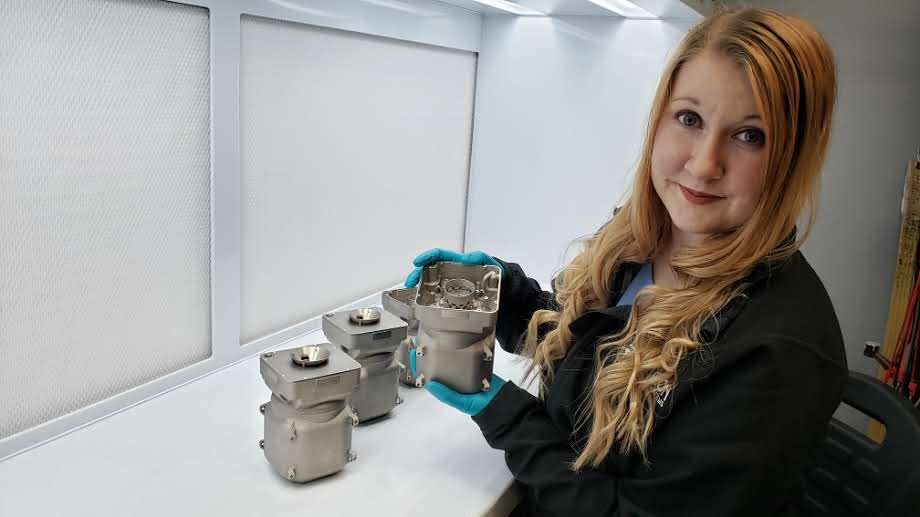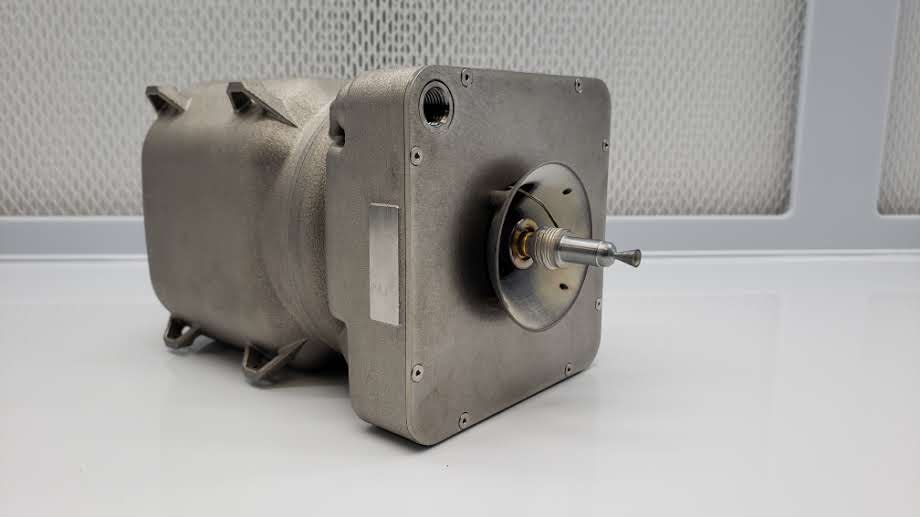Rubicon’s Small Propulsion Module is Pathfinder for Future Systems

Huntsville, Alabama – April 13, 2023 - ASCENT (Advanced Spacecraft Energetic Non-Toxic) propellant is an advanced monopropellant formulation developed by the Air Force Research Laboratory (AFRL), formerly referred to as AF-M315E.
ASCENT is a low-toxicity and highly stable liquid propellant that delivers a 50% increase in density specific impulse (Isp) over the present state-of-the-art hydrazine monopropellant. ASCENT owes its high performance characteristics to its high density and high combustion temperature. The challenge is that it burns too hot for typical thruster materials to be used. That is where Plasma Processes LLC excels.
Plasma Processes LLC (PPL) specializes in high temperature coatings and refractory metal fabrication. When NASA initiated the Green Propellant Infusion Mission (GPIM), Aerojet Rocketdyne came to PPL to build components for those thrusters. PPL was already working on its own thruster developments that used the fuel, and in 2019 they were selected to build the 0.1N thrusters for NASA’s Lunar Flashlight Mission. “Plasma has been manufacturing components for rocket engines for decades,” said Plasma Processes President, Tim McKechnie. “Lunar Flashlight is the first spacecraft to be propelled by engines we designed, manufactured, qualified, and hot fire tested.” The successful development of the 0.1N thruster was a catalyst for new developments and growth.
Rubicon Space Systems, a division of Plasma Processes LLC, was formed in mid-2022 to become the premiere manufacturer of thrusters that use the “green” fuel, ASCENT. “We are developing a line of smallsat propulsion systems that use our thrusters. our first one is named Sprite,” stated Kenzie Kilcoin, a Propulsion Systems Engineer for Rubicon Space Systems. She leads the day-to-day engineering effort to develop the Sprite propulsion module. Sprite fits in a 10cm x 10cm x 15cm envelope (plus tuna can). With mass of under 2 kgs, it would deliver over 1200 Ns of total impulse. It uses a single 0.1N ASCENT thruster in blow-down operation.

One or more Sprite units can serve as a simple and cost-effective way to add propulsion to a cubesat, add collision avoidance, or de-orbit capability to a smallsat. A unique feature of the Sprite modules is that up to eight can work together collectively. “The modules can be placed anywhere on a spacecraft. The integrator only needs to run a small cable between them,” Kenzie explained. “It gives a lot of flexibility.” She went on to explain that the communication between the spacecraft and the Sprite module is RS-422 protocol. Communication between Sprite modules is RS-485. This allows synchronization of command execution for all modules in the chain. More importantly, the interface protocols between the spacecraft and first Sprite module is unchanged.
Rubicon built four development units. Leaning on our ghostly naming trend, Kilcoin gave them all names. “I call them Inky, Blinky, Pinky, and Clyde,” she said with a laugh. “Inky is our manufacturing pathfinder, Blinky is our structural qualification unit, Pinky is our hot fire testing unit, and Clyde will be our protoflight unit.”

Future Developments. Rubicon recently won its first contract for a Sprite module, so the team is excited for Clyde, the protoflight Spite module. Kilcoin was eager to share news about Rubicon’s future developments. “Sprite is just the beginning. We were very intentional about what we did with Sprite so that it informs building our next system,” she shared. “We are now using that experience and insights to develop a larger propulsion module named Phantom.” Phantom will use four 0.1N ASCENT thrusters and deliver more than 9000 Ns of total impulse. Phantom will share many components with Sprite. It is expected to complete development in mid-2024.
Propelled to engineering from the beginning, Kilcoin joined Plasma Processes LLC in June of 2021. She got involved with astronomy at an early age and spent a lot of time learning about space and America’s space history. “I remember seeing shuttle launches, reading about the voyager missions, and being awestruck,” Kilcoin remarked excitedly. Kilcoin shared that she was motivated to pursue science and engineering by pioneering women such as Jane Goodall, Marie Curie, Katherine Johnson, her grandmother. She was exposed to shop equipment very early and picked up woodworking skills building furniture. This soon led to her prototyping her own aerospace designs.
In college at Iowa State, Kilcoin was a member of a CubeSat program. She worked on the structure, power system, Attitude Determination and Control System (ADCS), and communications of Iowa State’s first cubesat, CySat-1. She would eventually become the project manager before graduating. Her role at Plasma Processes began with supporting the qualification effort for the 0.1N thruster and hot fire testing Rubicon’s line of thrusters. “Through my career, I aim to enable more exploration and discovery of what exists beyond our world,” Kenzie said. “And I believe that propulsion is the primary enabler to the exploration of space.”
Very soon, Ms. Kilcoin will be getting married, and the Rubicon and Plasma family wish her and her husband a happy wedding and a successful journey together as Mr. and Mrs. Kilcoin-McPherren.